Department of Radiology marks seven decades of education, discovery and care
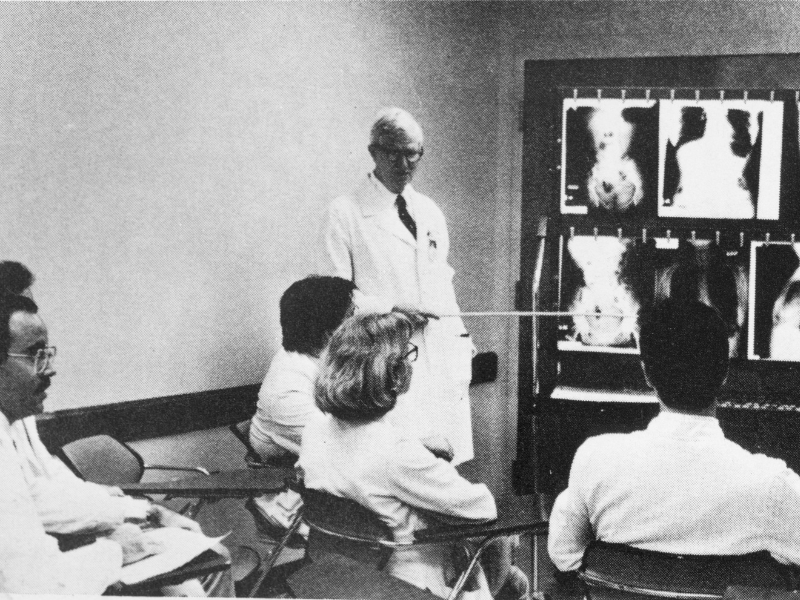
Editor’s Note: To commemorate the University of Mississippi Medical Center’s 70th anniversary, we will feature a series of stories throughout the year on the original School of Medicine departments established in 1955.
The University of Mississippi Medical Center School of Medicine’s Department of Radiology has been an essential part of health care, education and research since UMMC’s inception.
Founded in 1955, the Department of Radiology was led by Dr. Robert Dye Sloan, professor and chair, until 1981. From the start, the department had essential roles at UMMC in education, patient care and research.
A third-generation physician from West Virginia, Sloan received his medical training at the Johns Hopkins School of Medicine in Baltimore. Sloan’s portrait can be seen in UMMC’s Portrait Gallery.
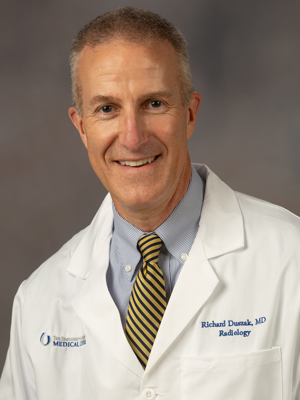
“As we celebrate 70 years of Radiology at UMMC, we honor a legacy defined by innovation, dedication, and progress,” said Dr. Richard Duszak, chair of the Department of Radiology. “Our true mission endures – educating the next generation of radiologists, delivering exceptional patient care and advancing important research.”
Dr. Robert Morris, executive vice chair of the department and associate professor in the Division of Musculoskeletal Imaging, a UMMC faculty member since 2016 and a UMMC graduate, will become chair effective Jan. 1.
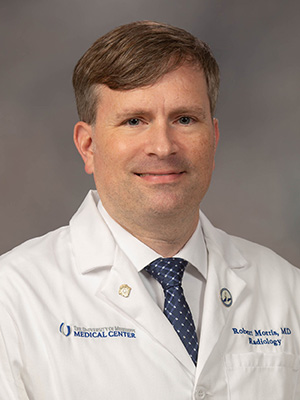
“UMMC radiology provides imaging and treatment for some of the sickest and most medically complex patients in our country, made possible by a group of skilled and dedicated radiologists that is second to none,” he said. “We are privileged and proud to provide this level of radiological care to Mississippi.”
The department’s founding was only 60 years after the discovery of X-rays by Wilhelm Conrad Roentgen.
“From the early days of imaging and radiation treatments to today’s advanced diagnostics and care, our department has stood at the forefront of technological advancement,” Duszak said.
Radiology education
From its start, the department’s educational mission was focused on its diagnostic radiology residency. Today, the training includes a structured curriculum for medical students at all levels, an interventional radiology residency program, dedicated residency tracks in nuclear radiology and pediatric radiology, and a variety of post-residency fellowship training programs.
Sloan began in 1955 by launching a radiology residency, leading to board certification in radiology. The three-year program, located in the hospital basement where Adult Radiology is located today, included diagnostic radiology and radiation therapy.
In 1960, Sloan then started a School of Radiology Technology and a two-year technology program that would send graduates toward certification and qualification as registered technologists. Clay Gordon, an X-ray technician at UMMC when the Medical Center opened, would go on to become director of the program.
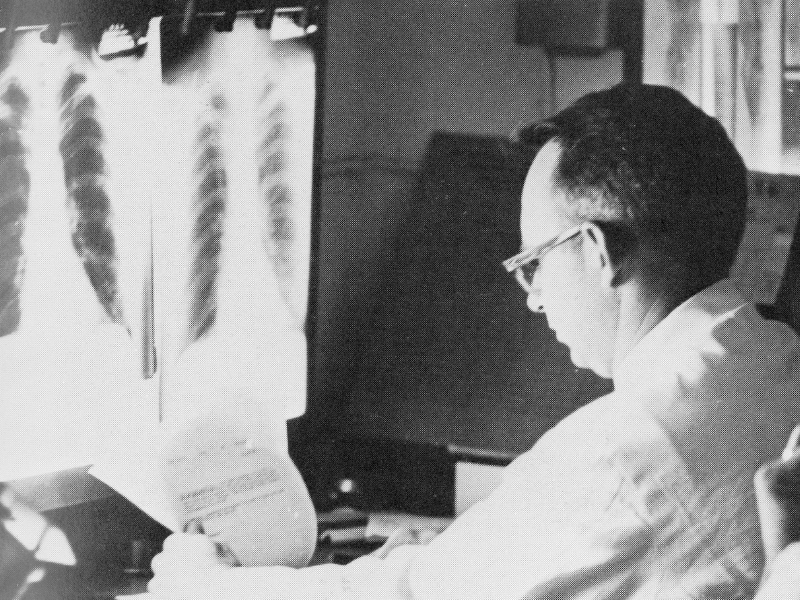
Also that year, a Nuclear Medicine Technology School to train radiology technologists for nuclear medicine procedures was started under the direction of Dr. Melvin Flowers. The school continued under the direction of Dr. Bharti Patel until 1990.
The Division of Ultrasound was started in 1970 with Dr. John Gibson as the director. Its equipment consisted of two diagnostic units without portable capabilities, and it was located near the post office in the hospital basement. Comprehensive ultrasound diagnostic services including high-risk and complicated obstetrics cases and tests for in-vitro fertilization were provided. In 1985, Dr. Ramesh Patel became the director, and the division moved to a larger space in the north basement with expanded portable and emergent adult and pediatric services.
The various radiology training schools within the Department of Radiology are now incorporated with UMMC’s School of Health Related Professions.
Over the years, the number of radiology residents has increased. Today, about eight residents are enrolled every year in its five-year residency program. Seven are in diagnostic radiology, and one is in the interventional radiology program. The residents’ curriculum includes a dedicated lecture series in each of the core imaging areas and a monthly visiting professorship series begun in 2023, featuring invited faculty from across the country. In 2024, UMMC was named runner up for best radiology residency training program in the country.
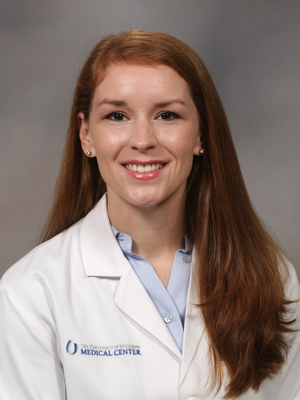
The program’s excellence is reflected in students’ performance, said Dr. Charlotte Taylor, associate professor of radiology, residency program director, vice chair of education for education in the Department of Radiology and assistant dean for graduate medical education.
“This is reflected in consistent high scores on In-Training examinations as well as Radiology Board examinations,” she said. “Our residents have been able to acquire fellowships at strong and prestigious programs nationwide.”
Imaging
The service mission of the department has seen an increase in the volume and scope of services provided to the institution as well as outreach facilities over the years, with notable recent improvements in a variety of patient access metrics.
Starting with adult and pediatric plain radiographic and barium studies, an additional chest radiography room was added on the first floor close to clinics for outpatient treatments. In 1955-1956, there were 13,374 patient visits to the department and 16,002 examinations and treatments. During the early years of the Department of Radiology, those numbers nearly doubled, seeing 25,636 patient visits and 30,863 examinations and treatments in 1957-1958.
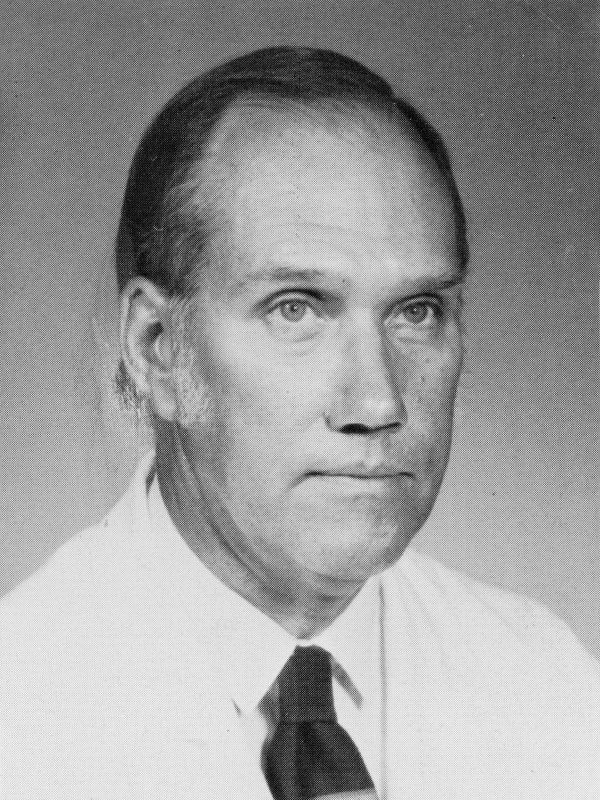
“While the department can be proud of both the quantity and quality of its routine diagnostic and therapeutic service activities, it has not been able to keep pace with the increasing demands placed upon it by the other clinical facilities in the hospital,” Sloan wrote in the department’s annual report in 1958. “The explanation for this fact revolves around the problems of personnel, equipment and space.”
In 1976, Sloan recorded more growth: “During this year, we averaged 739 more patient visits per month than for the previous year and 858 more examinations and treatments per month.”
Advances in radiology resulted in the addition of transluminal angioplasty and nuclear cardiology as services in 1981.
In 1989, Dr. Brent Harrison, chair of the department, got General Electric to donate a CT scanner to a hospital in St. Petersburg, Russia. This and Dr. Robert Smith, chairman of the Department of Neurosurgery, spending several weeks in the former Soviet Union studying a minimally invasive treatment for treating brain aneurysms, “planted the seeds that led to the Palaces of St. Petersburg exhibit in Jackson in 1996,” according to “Promises Kept.”
The continued growth in radiological services at UMMC is clear. There were 453,619 procedures done for the 2025 fiscal year. Outreach services are provided to Lexington/Holmes County, G.V. (Sonny) Montgomery Veterans Affairs Medical Center and UMMC Grenada. Diagnostic and interventional services are provided around the clock by in-house radiologists and residents.
Lifesaving care
At its inception, the department also encompassed the Division of Radiation Therapy, which occupied the southern part of the hospital and had dedicated space to house a cobalt radiation source as well as equipment for brachytherapy, an internal radiation therapy used to treat various types of cancer by placing radioactive material inside or near a tumor.
Beginning in the 1950s, cobalt therapy used gamma rays from the radioisotope cobalt-60 to treat conditions such as cancer. This has since been replaced by technologies including linear accelerators.
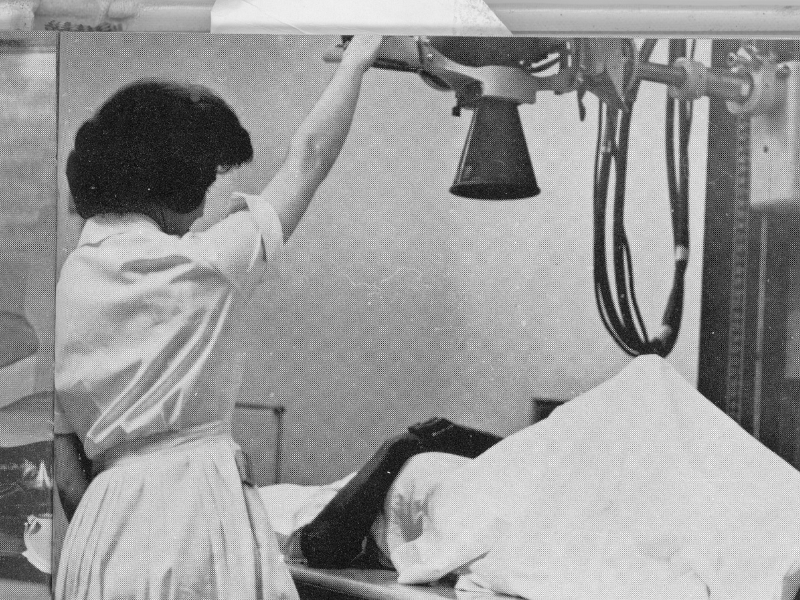
By 1960, the Department of Radiology began offering diagnostic and therapeutic services in the field of nuclear medicine. Flowers, board certified in radiology and nuclear medicine, was named director of nuclear medicine, and a hot lab to produce and calibrate nuclides was built in the north basement.
In the mid-1980s, nuclear medicine services were expanded for more extensive cardiac imaging, including dynamic cardiac tests in collaboration with UMMC’s Division of Cardiology, and by acquisition of dedicated SPECT gamma cameras for heart, brain and abdominal organ evaluations.
Continued advancements in radiology were mirrored in the department’s growth. The 1980s saw two more suites added, including one for neuroradiology procedures. In 1987, a magnetic resonance scanner was installed.
With increasing patient volume requiring cross-sectional imaging services, more space was requested. Plans were conceived by Drs. Ramesh Patel and Robert Harrison to install three CT scanners and three magnetic resonance scanners in a new building at UMMC.
An addition was built to house a specialized, low strength, open magnetic resonance scanner for neuro and body interventional procedures. This was one of only three such scanners in the country. Biopsies, cryo and radiofrequency ablations of tumors were done on this scanner. More floors were added to the building, which became a critical care facility.
Research
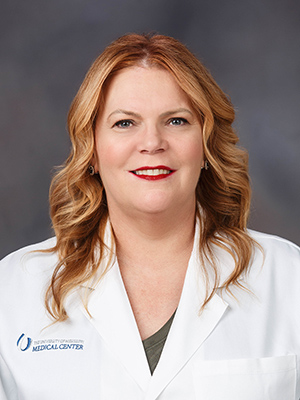
Research and scholarly activity in the department have accelerated dramatically in the past decade, reflecting both the expansion of multidisciplinary collaborations and strategic leadership, said Dr. Candace M. Howard, who has served as vice chair and director of radiology research since 2017.
Building on a foundation of early grants and publications in radium therapy and nuclear medicine, the department now leads and supports a diverse portfolio of federally and industry-funded clinical trials, translational research and educational innovation, and has developed an infrastructure to support rapidly growing artificial intelligence research.
As of 2025, the department oversees the imaging arm of six federal and 28 industry-sponsored active clinical trials, as well as 28 original research projects, supporting a total active grant funding exceeding $24 million to UMMC.
Major research themes include:
- Cardiometabolic and obesity-related disease: UMMC Radiology is a key partner in the Jackson Heart Study and the Mississippi Center for Clinical and Translational Research (MCCTR), developing imaging biomarkers for cardiovascular risk, liver disease and metabolic syndrome, particularly in populations with historically limited health care utilization.
- Cancer imaging and precision medicine: Faculty members have pioneered functional precision medicine trials, including a multi-institutional randomized trial in glioblastoma, demonstrating that cancer stem cell assays can guide chemotherapy selection and improve survival. Ongoing research includes patent-pending image-guided gene therapy, immunotherapy, theranostics (an area that combines therapy with diagnostics), radiomics and artificial intelligence for cancer diagnosis and treatment response.
- Educational innovation: UMMC now offers one of the only active programs in the nation combining radiology residency with doctoral training in biomedical imaging and engineering, cultivating award-winning physician-scientists and expanding opportunities for students, residents and fellows. Founded in 2019 by Howard, the program’s first two graduates collected more than 40 regional and national research awards and grants.
- Artificial intelligence (AI) research and innovation: Under Duszak’s leadership, the department has developed a data storage and analytic, legal, and patient privacy infrastructure to support AI research. This has already led to prestigious National Institutes of Health research funding and a corporate start-up intellectual property licensing agreement.
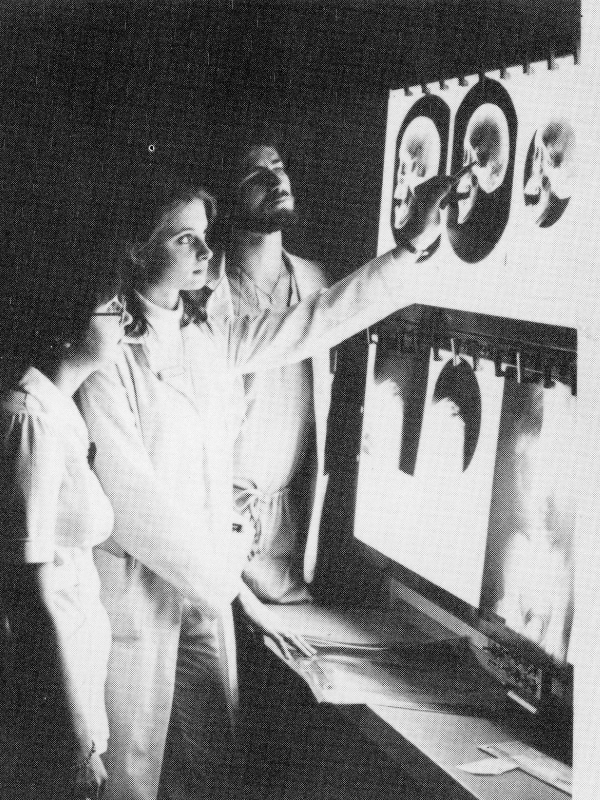
Faculty and trainees have published extensively in high-impact journals nationally and internationally.
Collaborative and multidisciplinary research is now the hallmark of UMMC Radiology, with active partnerships across the School of Medicine, Graduate School of Biomedical Sciences, Cancer Center and Research Institute, the MIND Center and national research networks, Howard said.
“The department’s commitment to advancing patient care through imaging science, precision medicine, and broadening access to advanced diagnostics and theranostics continues to shape the future of radiology in Mississippi and beyond,” she said.
For these various clinical, educational, and research initiatives, the department has received multiple institutional and national awards and recognitions.


